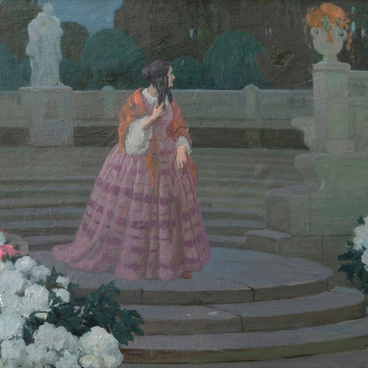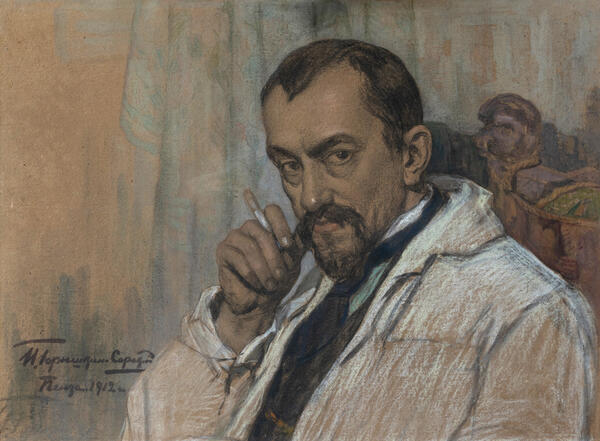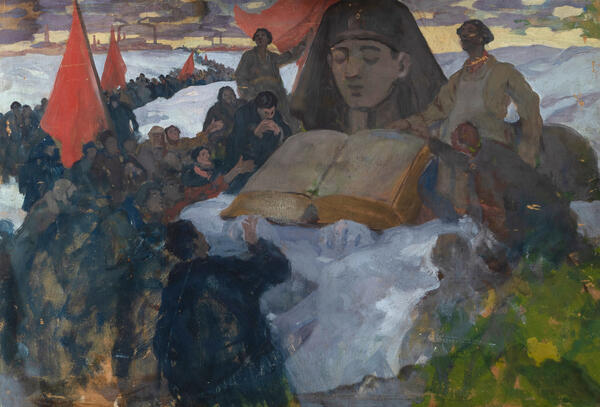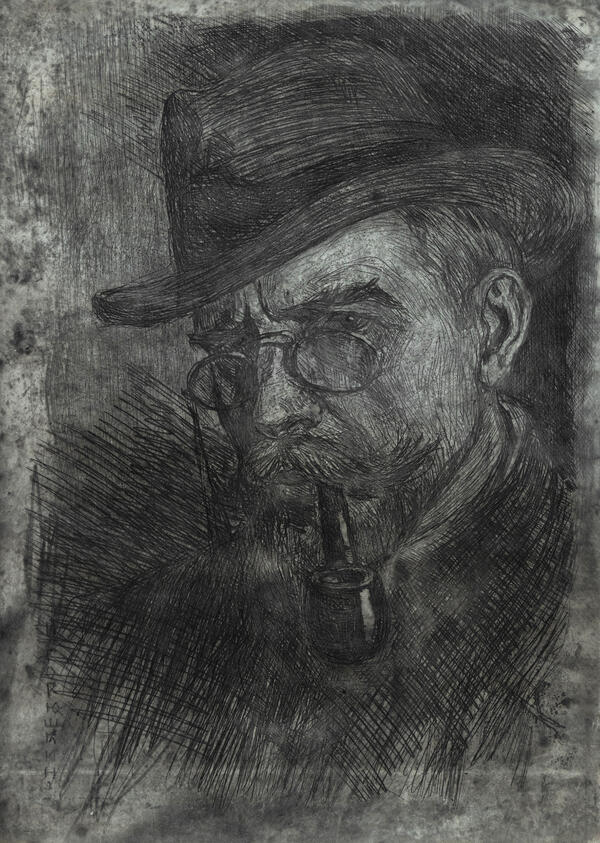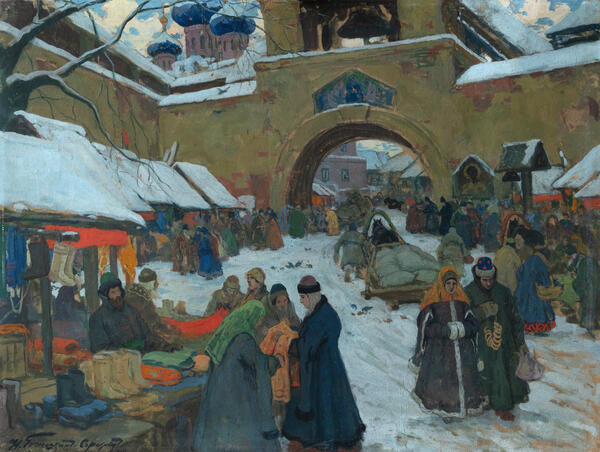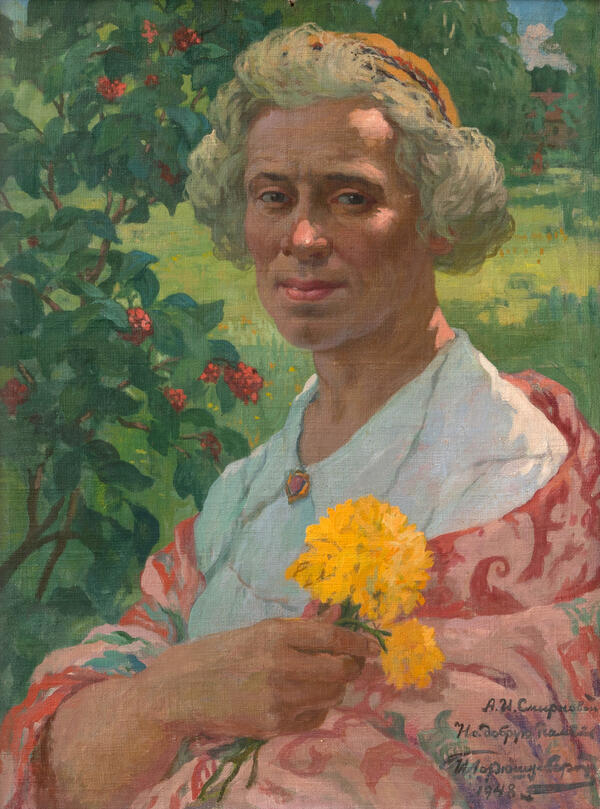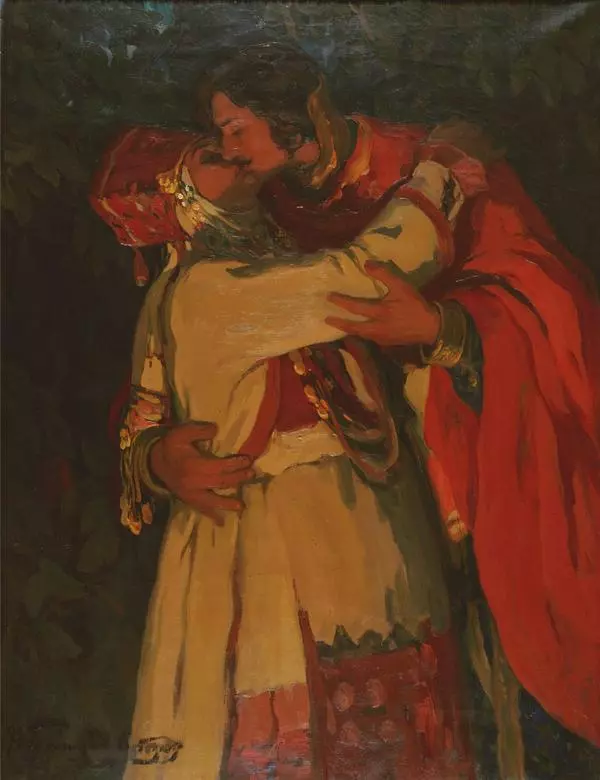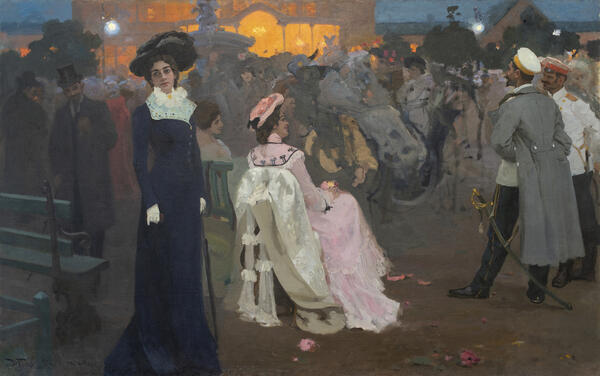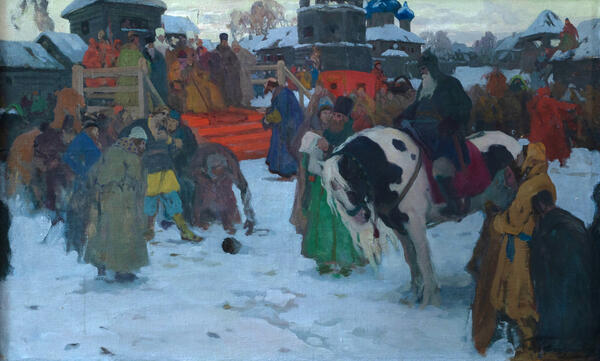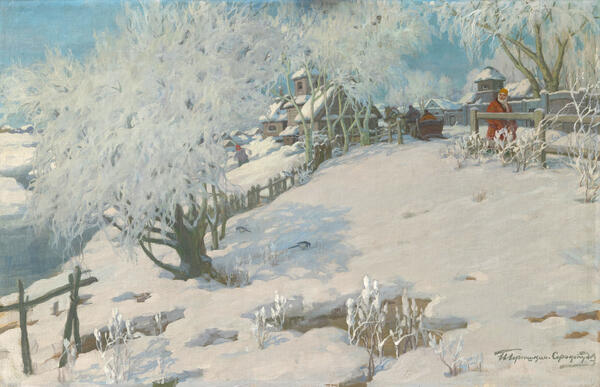The poignant painting “Fallen Bells” by Ivan Silych Goryushkin-Sorokopudov is imbued with sadness. The artist created this work in the 1930s. Beneath the large archway of the monastery wall, there are two monks. The elder one is wearing a tall klobuk — an Orthodox black headcovering — and leaning on a cane. Both monks gaze sadly at the church bells that lie in the snow.
Ivan Goryushkin-Sorokopudov worked thoroughly on the color palette for this painting. He chose a pale blue for the snow, and a pinkish hue for the monastery walls. He succeeded in capturing the weathered appearance of the bells covered in patina. The entire composition is enveloped in a soft light, as the cold evening twilight slowly fades over the remains of the past.
At the time when the painting was created, the Communists destroyed the Spassky Cathedral in Penza. There are recorded accounts of these tragic events, “At first, work began on the bell tower, preparing the bell for removal. The fasteners were removed, and the bell was hung on a rope, which was cut with an ax. As the huge bell began to fall, there was a loud sound like a cannon shot as it passed each layer. Many people said that their ears were blocked.” Three days later, the man who cut the rope turned black and died.
Perhaps, this is the event that inspired Ivan Goryushkin-Sorokopudov to paint this scene. He created an epitaph for a monument that was considered the heart of the city. By the time the Spassky Cathedral was demolished in 1934, many representatives of the clergy had already been persecuted in the USSR. Under Soviet rule, tens of thousands of churches and monasteries were demolished or converted.
In the 1930s, the artist
Mikhail Yemelyanovich Valukin got acquainted with Ivan Goryushkin-Sorokopudov.
He wrote about this period in the life of his friend as follows, “He had a
shaved head, with his sharp eyes gazing prickly from under his furrowed brows,
a pointed beard, and a curled, yellow smoky mustache. He wore high boots,
breeches, and a dark sweatshirt with a belt. He carried himself with dignity
and looked disgruntled. His gait was measured and unhurried. He never changed
his speed, no matter what happened. He was strict and demanding in class. He
did not tolerate laziness, negligence, or theatrics.” The artist had small
icons at home.
